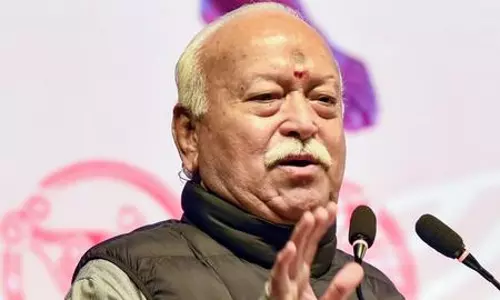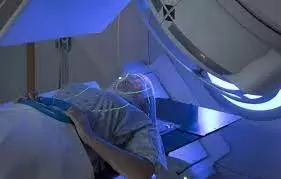
Scientists in US led by Indian discover a ‘Pathbreaking’ treatment for brain cancer
text_fieldsThiruvananthapuram: Scientists at the San Francisco Medical Centre made a pathbreaking finding that could bring a fundamental change in the treatment of cancerous brain tumours.
They discovered that the cancerous cells link up with healthy brain cells to become hyperactive and cause speedy cognitive loss and death in patients.
The team, led by Saritha Krishna, an Indian, also found out that a commonly used anti-seizure drug was effective in reducing the hyperactivity of the tumour cells and even halting their growth.
The study was published in the latest issue of the science journal "Nature".
Scientists have found out that the communication between healthy brain cells and cancerous cells could be manipulated to slow down or even halt the growth of the tumour.
These findings will be more beneficial to patients with glioblastoma, considered the most fatal among adult brain cancers, the study noted.
The study conducted by Ms Krishna and fellow scientist Shawn Hervey-Jumper discovered a previously unknown mechanism by which brain tumours hijack and modify brain circuitry to cause a decline in cognitive activities in glioma patients while recording the brain activity in patients undergoing awake-brain tumour surgery.
Talking to PTI, Ms Krishna, a native of Thiruvananthapuram, Kerala, and the lead author of the paper, said when patients were given language tasks during awake brain surgery, in addition to the commonly known language areas of the brain, we found activation in tumour-infiltrated brain regions, which were remote and farther away from the language brain zones.
This unexpected finding showed that the deadly cancer cells can hijack and restructure connections in surrounding brain tissue to make them hyperactive, speeding up cognitive decline and shortening the survival period among patients.
This forced the scientists to carry out extensive biological characterisation of the connected tumour cells, using brain organoids (small bundles of neurons derived from human stem cells and mouse models engrafted with human glioblastoma cells.
"These experiments revealed a key role of a protein called 'thrombospondin-1' in this neuronal hyperexcitability and that the drug, gabapentin, a commonly used anti-seizure medication, successfully reduced neuronal hyperexcitability and halted further tumour growth," the study quoted.
This discovery could be greatly beneficial in developing more effective treatment methods for a very fatal disease like glioblastoma, the scientists noted.
"Besides this known anti-seizure activity, this study discovering the anti-tumour effect of gabapentin using mouse models highlights the potential of repurposing this existing drug to target tumour growth, thereby expediting therapeutic drug development for patients with malignant glioma," Saritha said.
Moreover, the key discovery regarding the hijacking of brain circuitry by the cancer cell, will lead to the development of drugs and neuromodulation techniques that could disconnect neuronal linkups with brain cancer cells to halt tumour growth, she added.
"Non-invasive brain modulation techniques traditionally applied to modulate neuronal function in epilepsy and psychiatric diseases, could now be exploited in clinical trials and tested in patients with brain cancer to suppress glioma's activity," Saritha said.
PTI with superficial edits























